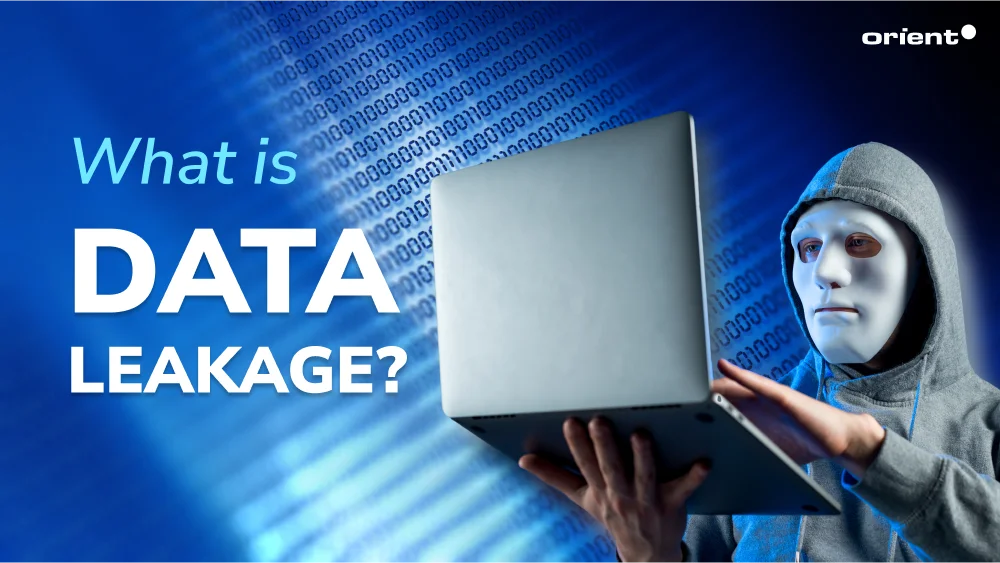What Is Data Leakage? The Silent Assassin Can Destroy Your Business

Content Map
More chaptersHere are some facts about data leakage that will definitely give you goosebumps. For the year 2023, there was a 78% increase in the data breach incidents that were disclosed to the public compared to the previous year. The average cost per incident of a data leak reached an unprecedented $4.45 million, a 15.3% rise from 2020. In addition, it might take organizations an average of 204 days to detect the loss of data and another 73 days to mitigate the loss. These delays cause significant financial and reputational loss, which begs for efficient data protection solutions.
Data leakage is not only a technical problem but also a strategic business concern. Since 86% of the data breach attacks were done by the use of stolen credentials, and 52% of the breaches exposed some form of customer personally identifiable information (PII), the consequences are grave for businesses. As a result of the dynamically changing threats in cyberspace, the awareness of threats linked with data leakage, as well as their minimization, is a critical factor if one wants to keep sensitive information safe and ensure the trustfulness of the customers.
What is data leakage, actually? By delving into the causes, consequences, and preventive measures of data leakage, this article aims to equip businesses with the knowledge needed to protect their most valuable asset: data!
Explanation of Data Leakage

Clearly, data leakage means the unauthorized transmission or disclosure of information within an organization to a third party or an outsider. It may happen by sharing something with another person or company inadvertently or when there is a data breach by cybercriminals or poor data protection. That is why it is necessary to prevent data leaks; otherwise, it will lead to financial losses, the organization’s reputation compensation, and legal fines. Some of the real incidences of data leakage examples are the transmission of confidential and sensitive information to the wrong recipient through email or the exposure of sensitive data through mobile data storage devices that are not secure enough.
Data leakage can occur in various forms and formats, which makes some implications more dangerous than others. All sorts of personal and sensitive information, like identification details, health records, and confidential information belonging to the company, are at risk of being leaked. Financial data is the most common on the hacker’s wish list. This includes credit card numbers, bank account details, and transaction history, among others. Further, there is always a medium for storing data on mobile devices, and data transfers like smartphones and USB are often the causes of data leakage. A majority of data breaches are initiated through human error or negligent mistakes like misconfigurations or phishing, but still, they can be caused by hybrid attacks designed to target the weak points of an organization’s security network.
Common Causes of Data Leakage

Data leakage is an important security concern that can stem from multiple sources, each of which brings about varying degrees of risk to an organization.
Insider Threats
Insider threat is reported to be one of the leading reasons for data leakage, especially due to employees’ carelessness or probable ill motives. There is also a possibility that certain employees might unintentionally disclose information because they did not know how to handle it properly, forgetting to double-check the recipient of the email or failing to secure the computer correctly.
On the other hand, malicious insiders are those people who will perpetrate and release information with the aim of benefiting themselves or causing harm to the organization. This is made worse by the absence of appropriate access controls and audits since the information can be accessed and manipulated by the wrong people without any notice. Most data leaks occur due to internal vulnerabilities, hence the imperative to strengthen internal security policies and conduct constant training.
External Attacks
External attacks can also be greatly attributed to causing data leakage. One of the popular techniques exploited by the cybercriminals is the use of phished emails to the employees of the organization with a view of getting into the organization’s secure data. Such attacks may include emails or messages that they present as legitimate business communications in an organization with the intention of familiarizing the employee with a particular link or file that contains the malware.
Once the attackers are in, they are in a position to take advantage of the loophole, penetrating into the systems as well as the applications in order to gain more data. Exploitation of these flaws is considered the key to accessing the network, and in most cases, data breaches are due to weak endpoint protection or old, unpatched OS.
Weak Security Practices
Lack of proper security measures is quite common, and when violated, it results in leakage of data. Lack of measures of encryption and data protection gives rise to the data that should remain concealed and secure. Basically, if there are no encoding mechanisms that are used to protect the data, it is easy for the data to be intercepted by the wrong hands as it goes through the transmission channel.
Likewise, misuse of cloud storage and collaboration platforms leads to another kind of leakage, which is accidental leakage. Cloud services such as Microsoft Office are widely used by various establishments in storage and sharing of data, and if these applications are not well set up, they can be a major source of vulnerability.
Detecting and Preventing Data Leakage
Given the prevalence of insider threats, external attacks, and weak security practices, it’s imperative to implement effective measures for detecting and preventing data leakage.
Data Loss Prevention (DLP) Solutions
DLP solutions assist an organization in recognizing, controlling, and protecting data in its different contexts on multiple endpoints, networks, and storage systems. Through the use of DLP tools, organizations are able to maintain organizational policies regarding data transfer, which will also help organizations meet set data protection policies. Some of the basic functionalities of DLP include the management of alerts, especially for unusual data access patterns. These alerts can lead to notification for potential data leakage incidents to the security teams so that they can immediately intervene. DLP solutions are best suited for data leakage prevention because they have the ability to continuously analyze and audit data traffic and usage patterns.
Some popular examples of DLP tools include:
- Symantec Data Loss Prevention: This tool helps provide a complete shield of data by constantly tracking it on endpoints, networks, and storage systems.
- Forcepoint DLP: It involves advanced analytics and policy enforcement that Forcepoint DLP delivers to enable businesses to stop data breaches and discharge compliance.
- Digital Guardian DLP: This solution gives unmatched data audit and accountability, thus giving organizations perfect protection of information they do not want to leak into the organization either through insiders or external threats.
Code42 Incydr: A modern DLP tool that detects and prevents unauthorized data movement across endpoints and cloud applications.
Employee Training and Awareness
It is also notable that the single most important best practice for avoiding data leakage is to establish a security culture in the company. In order to reduce risks that are inherent to human factors, staff needs to be trained about data security measures. Topics that must be included in the training are how to identify and avoid these phishing attempts, how to handle sensitive information securely, and respecting the privacy of individuals.
Besides the induction, organizations should carry out recurrent security sensitivity training programs to educate the employees regarding the existing threats and security measures. Such sessions may include training in the form of workshops, webinars, and simulated phishing to involve the employees and remind them of the principles of data security. Another measure to avoid data leakage is to ensure that employees are trained on the proper measures that need to be taken to protect the data. Such testing focuses mainly on the workers since they are often the first line of defense of an organization’s data against threats.
Securing Network Perimeters
The protection of data from outside threats requires the safety of the networks’ outer boundaries to be made. The use of firewalls and the installation of intrusion detection systems (IDS) contribute to having a strong barrier against any person’s attempt or cyberattack. Firewalls are known to be security appliances that isolate internal networks from other possible sources; they control traffic flow in and out of the networks by virtue of a set of rules on security. IDS are designed to follow activities to detect any irregularities and possible security breaches and send out alert messages to security departments.
Security audits and vulnerability assessments are important to establish in organizations to ensure that the organization’s security status is checked regularly for any forms of vulnerability as a safety measure against ever-increasing security threats around the world. These assessments enable an organization to assess its strengths, weaknesses, and compliance status with the existing security structure.
Orient Software: Your Trusted Partner to Prevent Data Leakage
Data leakage, as you have seen previously, is equally dangerous to small, medium, as well as big firms. In order to avoid the aforementioned risks occurring to your organization, you should make sure that you have adequate protective measures for data.
We realize that meeting such threats and risks can be intricate at times; thus, Orient Software is here to provide a complete solution that incorporates the latest technology solutions, employee awareness, and strong security protocols. Thus, by choosing us as your partner, you will have a number of advanced tools, DLP, particular software programs, and efficient measures to strengthen the security of the network perimeter.
Data leakage must not be a thing that you have to experience with your business. Reach out to Orient Software now to know more about how we can be of service to your organization concerning the services that will protect your company from such nasty incidences in the future.







